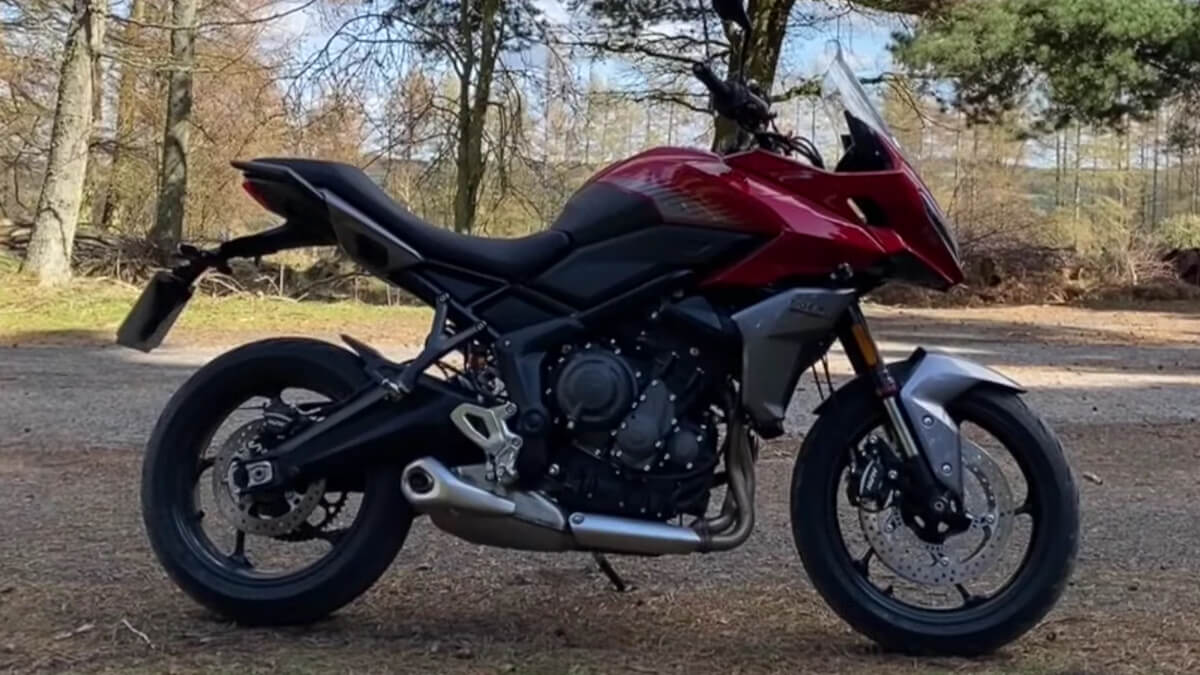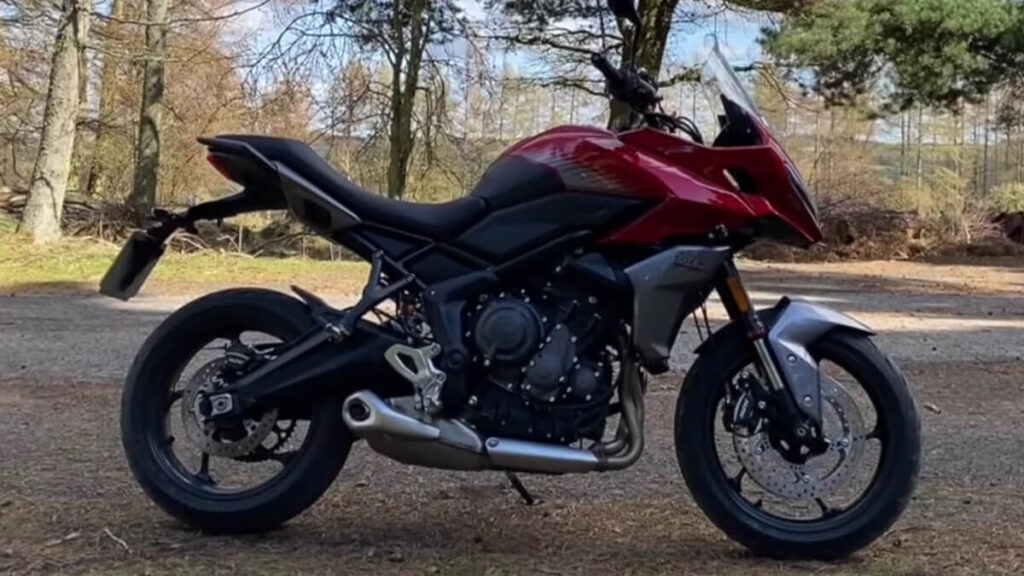
7 Triumph Tiger Facts You Should Know Before You Buy
Whether you’re a hardcore Triumph Tiger fan, are just considering getting one for yourself, or only curious about the adventure tourer segment, there are a few things about the Tiger lineup worth knowing. Here’s a round-up of pertinent but little-known facts about Triumph Tigers, including things you should probably consider before buying one.

How long will a Triumph Tiger last?
Powertrains on well-maintained Tigers are known to easily last about 100k miles on 660 — 1,050 cc models, and 200k miles on Explorer / 1200-cc models. Chassis last longer, but the frame design on pre-2018 Tiger 800s is vulnerable to fall damage that might render the bike useless.[1-2]
The issue with frames is also not as bad as it sounds, as the majority of Tiger 800s that sustained falls did emerge unscathed, barring minor scratches and broken plastic. But riders rightly complained that it isn’t a great idea for the pillion pegs to be welded directly onto the main frame, as any damage to the footpegs can potentially compromise the entire frame. The video below highlights exactly where the problem lies.
This design flaw has been fixed on post-2018 models, when Triumph introduced a bolt-on subframe that can be easily replaced.[3]
As for engines, it’s worth noting that there are many Tiger owners who report their bikes serving them well even past the 200k mile mark. Tiger Explorer and Tiger 1200 models, in particular, are known to last longer, owing to the shaft drive that insulates the transmission completely from the elements, reducing wear.
Another common concern many riders have about quality is where the bikes are manufactured — after all, there must be some truth to the stereotypes about the quality of manufacturing in different countries, like Japan, Germany, and China. So…
Where is the Triumph Tiger made?
Since 2020, all non-factory-custom Triumphs, including Tiger models, have been made in Thailand. From 2007 to 2020, many models, including Tigers, were made in the UK, but the percentage made in Thailand increased year on year. Production of bikes for Europe will move back to the UK by Q4 2022.[4]
| Year | Model | Manufacturing Location |
|---|---|---|
| Pre-2007 | All Triumph models | United Kingdom |
| 2007 to 2020 | Most Triumph models except Tiger 1200, Speed Triple, and factory customs | Thailand |
| 2007 to 2020 | Tiger 1200 and Speed Triple | United Kingdom |
| 2020 to 2022 | All Triumph models except factory customs | Thailand |
Triumph often likes to point out that their factories in Thailand are wholly owned by Triumph UK. This is different to the arrangements that KTM and BMW have for their Asian-made models, which are in many cases made in factories that the brands do not own.
Incidentally, while we’re on the subject of BMW and Triumph, I should mention that there’s a common misconception that BMW owns Triumph Motorcycles.
BMW has at no point owned, or had any ownership stake in Triumph Motorcycles Ltd, a company privately owned by John Bloor. The myth about BMW owning Triumph stems from the fact that BMW owns a “Triumph” trademark for an entirely unrelated car brand.[5-6]
Coming back to manufacturing locations, should you really care where your Triumph motorcycle is made? Well, considering Triumph’s excellent reputation for build quality, if you are concerned about where their bikes are made, it should be for reasons other than quality or reliability.
That said, if you do find yourself babysitting a broken down Triumph Tiger, you’d probably be worried about an entirely different problem: carting the bike to a dealership. Which brings us to the next point — will it fit in a utility trailer?
How long is a Triumph Tiger?
Triumph Tiger models range from 81” to 93” (2,038 — 2,350 mm) in length, measured tip to tip in stock condition. This fits most utility trailers used for motorcycles, like U-Haul trailers (about 92” on the inside). However, the rear fender may extend beyond the tailgate, in some cases.[7]
| Model | Year | Length (in) | Length (mm) |
|---|---|---|---|
| Triumph Tiger 1050 / 1050 SE ABS | 2010 | 83.1 | 2110 |
| Triumph Tiger 800 | 2011 - 2012 | 87.2 | 2215 |
| Triumph Tiger 800 XC | 2011 - 2012 | 87.2 | 2215 |
| Tiger Explorer | 2012 - 2014 | 88.5 | 2248 |
| Tiger Explorer XC | 2012 - 2014 | 88.5 | 2248 |
| Triumph Tiger Sport | 2012 - 2017 | 81.7 | 2076 |
| Triumph Tiger 800 XCx | 2015 | 89.1 | 2262 |
| Triumph Tiger 800 XR | 2015 | 87.2 | 2215 |
| Triumph Tiger 800 XRx | 2015 | 86.6 | 2200 |
| Triumph Tiger 800 XCA | 2016 - 2018 | 87.2 | 2215 |
| Triumph Tiger 800 XCx Low | 2016 - 2018 | 89.1 | 2262 |
| Triumph Tiger 800 XRT | 2016 - 2018 | 87.2 | 2215 |
| Triumph Tiger 800 XRx Low | 2016 - 2018 | 86.6 | 2200 |
| Tiger 1200 XCA | 2018 - 2021 | 85.7 | 2176 |
| Tiger 1200 XCx | 2018 - 2021 | 85.7 | 2176 |
| Tiger 1200 XR | 2018 - 2021 | 85.7 | 2176 |
| Tiger 1200 XRT | 2018 - 2021 | 85.7 | 2176 |
| Tiger 1200 XRx | 2018 - 2021 | 85.7 | 2176 |
| Tiger 1200 XRx Low | 2018 - 2021 | 85.7 | 2176 |
| Triumph Tiger 800 XCA | 2018 - 2021 | 89.1 | 2262 |
| Triumph Tiger 800 XRT | 2018 - 2021 | 86.6 | 2200 |
| Triumph Tiger Sport | 2018 | 87.2 | 2215 |
| Triumph Tiger 1200 GT / GT Pro / GT Explorer | 2022 | 82.1 | 2085 |
| Triumph Tiger 1200 Rally Pro / Rally Explorer | 2022 | 80.2 | 2038 |
| Triumph Tiger 900 GT / GT Pro | 2020 - 2022 | 92.5 | 2350 |
| Triumph Tiger 900 GT Low | 2020 - 2022 | 89.6 | 2275 |
| Triumph Tiger 900 Rally / Rally Pro | 2020 - 2022 | 90.6 | 2300 |
Pro tip: If you do find yourself with a Triumph Tiger that won’t start, it’s worth knowing that on older models, (pre-2016), one of the most common causes of an engine cranking but not starting (or rough-running cylinders) is water contamination in the fuel tank.
One known issue on pre-2016 Triumph Tigers is that the design of the fuel cap sometimes allows water to pool around the fuel filler cap, which has been known to seep into the tank, on occasion. This typically only happens if the bike has had prolonged exposure to a heavy downpour when stationary, or when a jet of pressurized water has been directed at the fuel cap for too long.
Water in the tank can potentially damage the bike’s fuel injectors, so it’s important to get it fixed immediately.
(All Triumph Tiger models manufactured from the year 2000 onwards are fuel injected, including the Tiger Sport 660, Tiger 800, Tiger 900, Tiger 1050, Tiger 1200 and Explorer models.)
Sources
- https://www.tiger800.co.uk/index.php?topic=6361.0
- https://www.advrider.com/f/threads/triumph-tiger-800-cracked-frames.1351445/
- https://www.advpulse.com/adv-news/spy-shots-2020-triumph-tiger-800/
- https://www.44teeth.com/triumph-bring-production-back-to-britain/
- https://register.openownership.org/entities/59b9847667e4ebf340be0475
- https://trademarks.ipo.gov.uk/ipo-tmcase/page/Results/1/UK00001473130
- https://www.uhaul.com/Trailers/Motorcycle-Trailer-Rental/MT/
